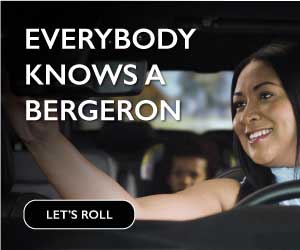Black History Month: Willie Mays brought barnstorming baseball team to New Orleans in 1956
 Twenty-five-year-old Willie Mays had just finished his fifth major-league season when he organized a barnstorming baseball tour that included New Orleans. As a former National League Rookie of the Year (1951) and Most Valuable Player (1954), he had established himself as one of the premier players in baseball.
Twenty-five-year-old Willie Mays had just finished his fifth major-league season when he organized a barnstorming baseball tour that included New Orleans. As a former National League Rookie of the Year (1951) and Most Valuable Player (1954), he had established himself as one of the premier players in baseball.
Mays assembled some of the best Black major-league stars into a team called the Major League All-Stars. They were slated to play two games against the Negro American League All-Stars at Pelican Stadium on November 4 and November 6. In addition to New Orleans, the barnstorming troupe appeared in cities such as Nashville, Knoxville, Birmingham, Charlotte and Austin.
Barnstorming during the offseason offered a way for players to supplement their income from the regular-season, at a time when major-league salaries were in the $15K – $30K range and Negro League salaries were much less.
Mays’s hand-picked team featured 20-year-old Frank Robinson who had been voted the National League Rookie of the Year; 22-year-old Hank Aaron who won the National League batting title; and 27-year-old Elston Howard, who helped the Yankees win the World Series. Monte Irvin served as coach and utility player.
Many of Mays’s player selections had started their professional careers in the Negro Leagues. As a member of the Birmingham Black Barons, Mays had previously played in New Orleans in 1948, when Game 4 of the Negro League World Series was played in the Crescent City.
The opposing Negro American League All-Stars were led by former Negro Leaguer Bob Boyd and included Black players who aspired to play in the majors.
The first game on Sunday afternoon drew a nice crowd of 5,330 fans.
The Mays team scored a run in the first inning, followed by a two-run homer by Hank Aaron in the third inning. The Negro American League squad tied the score with three runs in the fourth inning, only to lose the game in the bottom of the ninth inning. An outfield error and a timely single by Al Smith provided the winning run for Mays’s team. Pitcher Brooks Lawrence went the distance for the Major League All-Stars, while Marshall Bridges took the loss after holding the major-leaguers scoreless from the fourth through the eighth innings.
For the scheduled Tuesday night game, Sam Jones, a noted curveball pitcher in the majors, was slated to oppose Negro American League All-Stars pitcher Charley Pride, then an aspiring professional player who later became a legendary country singer.
However, the game was rained out. While the local newspapers reported the second game would be pushed to the following Friday, there wasn’t an account of the game having actually been played.
Aaron returned to New Orleans with the Atlanta Braves in 1974 for an exhibition game against the Baltimore Orioles in Kirsch-Rooney Park. He thrilled the local crowd with a home run. Three days later in a regular-season game, Aaron tied Babe Ruth’s home run record of 714 home runs.
In 1984, Mays and Aaron were featured players in an exhibition game in the Louisiana Superdome between former major-leaguers, as part of the “All-Time All-Stars” series. Once again, Aaron delighted the crowd in the first inning with a home run off Bob Feller.
- < PREV Soccer: 12 area teams in quarterfinal action on Lundi Gras
- NEXT > Privateer Athletics mourns loss of former long-time women's basketball coach Billy Holmes
Richard Cuicchi
New Orleans baseball historian
Richard Cuicchi, Founder of the Metro New Orleans Area Baseball Player Database and a New Orleans area baseball historian, maintains TheTenthInning.com website. He also authored the book, Family Ties: A Comprehensive Collection of Facts and Trivia About Baseball’s Relatives. He has contributed to numerous SABR-sponsored Bio Project and Games Project books.





